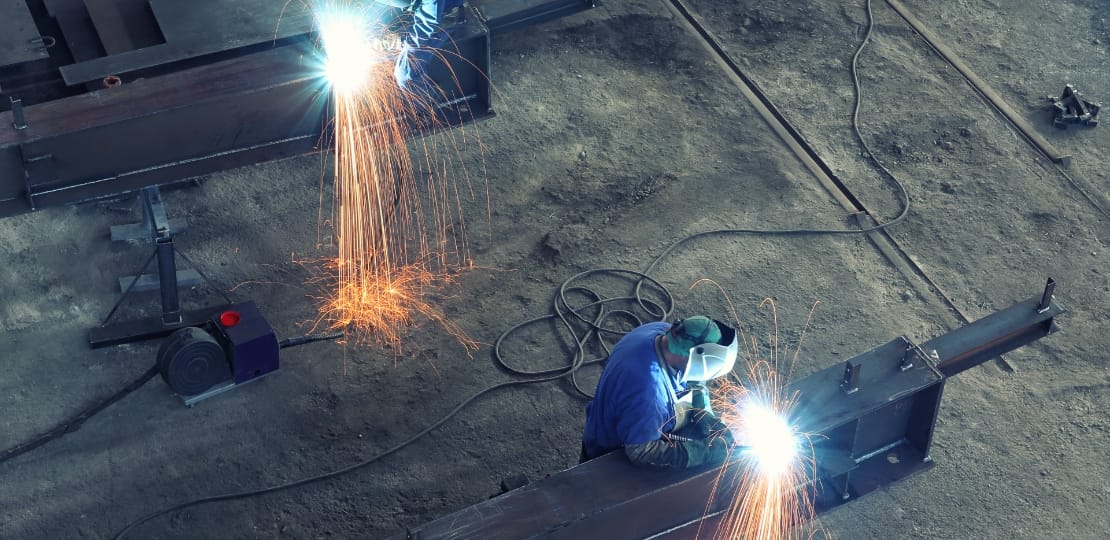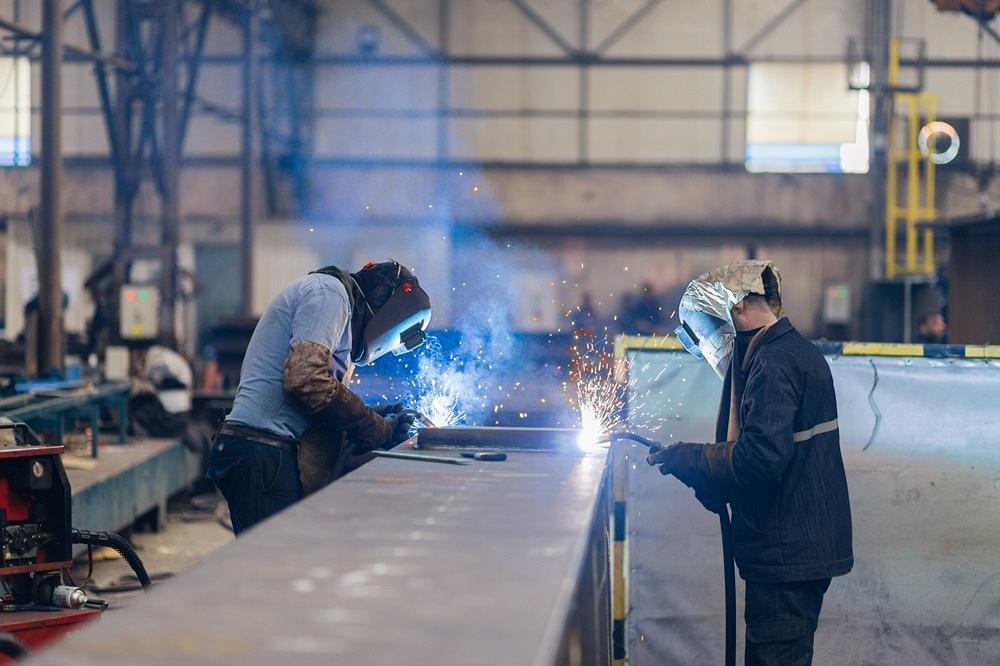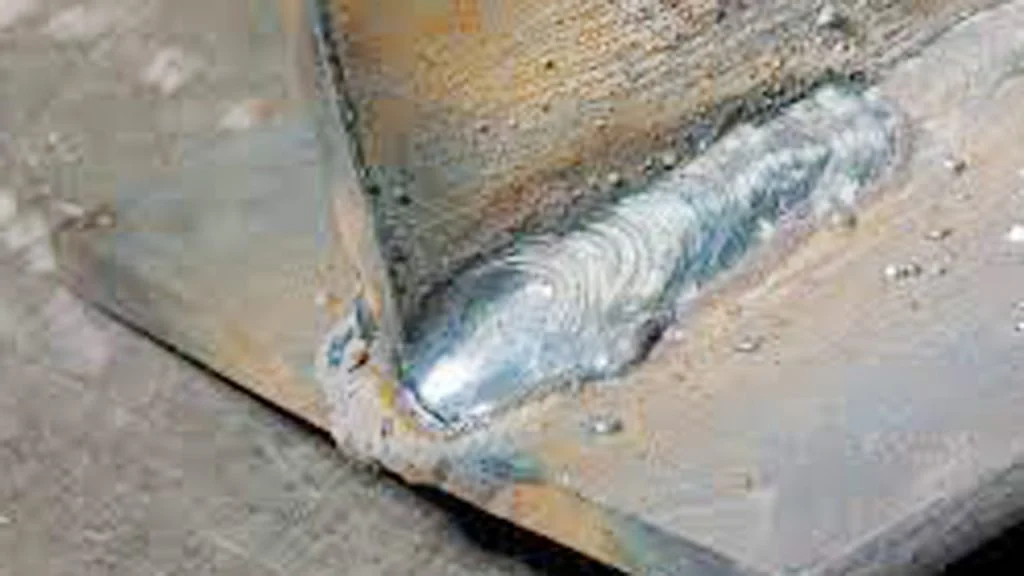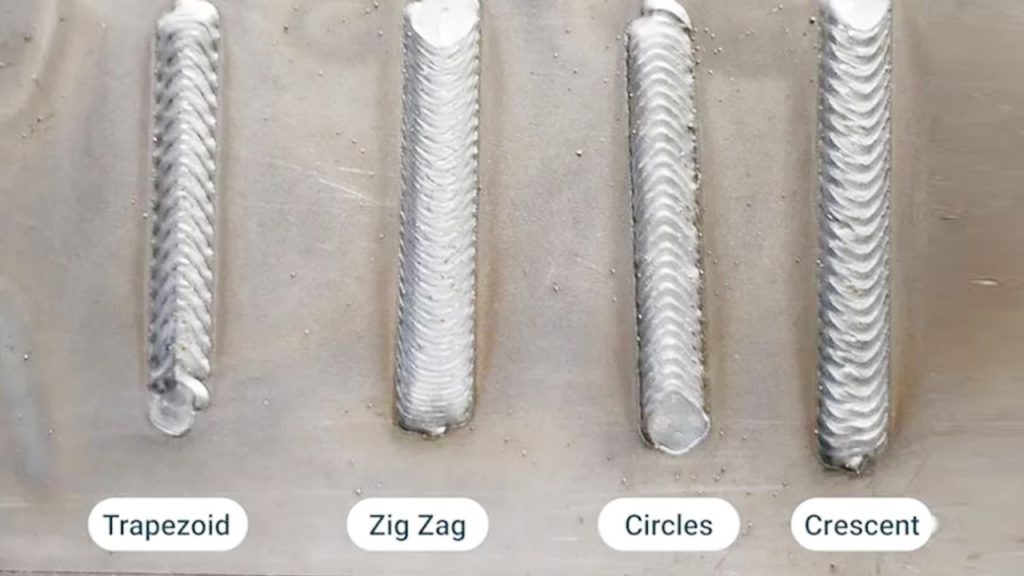Welding is essential in many industries, from construction to automotive repairs. Choosing the right welding process can make all the difference.
Different welding methods offer unique benefits and applications. Some are perfect for heavy-duty projects, while others are better for precise, delicate work. Understanding these processes helps you select the best one for your needs. This guide will explore various welding techniques, breaking down their strengths and ideal uses.
Whether you are a beginner or an experienced welder, knowing the best welding process ensures quality results and improves efficiency. Let’s dive in and discover which welding method suits your next project.
Introduction To Welding Processes
Welding is a key process in many industries. It joins two materials, often metals, together. This creates strong, lasting bonds. Understanding different welding processes helps choose the right one for each job.
Importance Of Welding
Welding plays a crucial role in construction and manufacturing. It ensures the structural integrity of buildings, bridges, and vehicles. Without welding, many modern conveniences would not be possible. Welding also allows for repairs and maintenance, extending the life of equipment and structures.
Historical Background
Welding has ancient roots. Early methods involved simple techniques like hammering metals together. Over time, these methods evolved. In the 19th century, electric welding emerged. This was a significant advancement. Today, technology continues to advance welding processes, making them more efficient and precise.

Credit: bancrofteng.com
Shielded Metal Arc Welding (smaw)
When it comes to welding, there are a lot of methods to choose from. One of the oldest and most reliable techniques is Shielded Metal Arc Welding (SMAW). Known for its versatility, SMAW is a favorite among both beginners and experts. Let’s dive into what makes this method tick.
Technique Overview
Shielded Metal Arc Welding, often called stick welding, uses an electric current to create an arc between the welding rod and the metal. This arc melts the rod and the metal, fusing them together. Here’s a simple breakdown:
- The welder strikes an arc between the rod and the metal.
- The heat melts the rod’s coating, creating a protective gas shield.
- The molten rod and metal pool together and then cool to form a strong weld.
Pretty straightforward, right? It’s a method that has stood the test of time for good reason.
Advantages And Disadvantages
Of course, no welding process is perfect. SMAW has its own set of pros and cons. Let’s take a closer look:
| Advantages | Disadvantages |
|---|---|
|
|
SMAW is like an old reliable friend—there when you need it, but not without its quirks. It’s ideal for outdoor work and thick materials, making it a go-to for many welders. However, the process can be slow, and the cleanup can be a bit of a hassle.
Next time you’re faced with a welding project, consider if SMAW is the right tool for the job. It’s not always the flashiest method, but it gets the job done, and sometimes, that’s all you need.
Gas Metal Arc Welding (gmaw)
Gas Metal Arc Welding (GMAW) is a popular welding method. It uses an electric arc to join metals. This process is also known as MIG welding. It stands for Metal Inert Gas welding. GMAW is known for its efficiency and ease of use.
How Gmaw Works
GMAW uses a continuous wire electrode. The wire feeds through a welding gun. An electric arc forms between the wire and the workpiece. This arc melts the wire and the metal surfaces. Shielding gas flows through the gun. This gas protects the weld from contaminants. Common gases include argon and carbon dioxide.
The process is semi-automatic. The welder controls the speed and movement. This gives better control over the welding process. GMAW is suitable for various metals. These include steel, aluminum, and stainless steel. It also works on different thicknesses of metal.
Applications In Industry
GMAW is used in many industries. It is common in automotive manufacturing. Car frames and body parts are often welded with GMAW. The construction industry also uses GMAW. It is useful for building steel structures and bridges. Shipbuilding benefits from this method too.
The aerospace industry uses GMAW for aircraft parts. It ensures strong and durable joints. In the manufacturing sector, GMAW is used for making machinery. It is also common in the production of pipelines. GMAW offers high productivity and consistent weld quality. This makes it a preferred choice for many sectors.
Flux-cored Arc Welding (fcaw)
Welding is a skill that brings together metals, creating strong bonds. One of the most versatile methods is Flux-Cored Arc Welding (FCAW). It’s like the Swiss Army knife of welding processes, known for its adaptability and efficiency. Whether you’re building a bridge or fixing a fence, FCAW might just be your best friend.
Process Description
Flux-Cored Arc Welding (FCAW) uses a special wire that is filled with flux. Think of it as a hollow tube packed with magical powder. When you weld, this flux melts and creates a protective gas shield. This helps to keep the weld clean and strong.
The process is similar to MIG welding, but with a twist. Instead of needing a separate gas tank, the flux in the wire does the heavy lifting. This makes FCAW great for outdoor work where wind can blow away shielding gas.
Materials Used
FCAW is a jack-of-all-trades when it comes to materials. It can be used on:
- Carbon Steel: Commonly used in construction and manufacturing.
- Stainless Steel: Ideal for projects needing rust resistance.
- Low-Alloy Steel: Useful for high-strength applications.
The wires themselves come in different types, usually categorized by their chemical composition and intended use. For example:
| Wire Type | Best For |
|---|---|
| E71T-1 | General Purpose |
| E71T-8 | Outdoors/Structural |
Picking the right wire makes a huge difference. Imagine trying to build a house with a toy hammer – it’s just not going to work!
In a nutshell, FCAW is like the multitool of welding. It’s adaptable, effective, and can handle a variety of materials. So, if you’re diving into a welding project, give FCAW a shot. You might just find it’s the perfect fit.
Gas Tungsten Arc Welding (gtaw)
When it comes to welding, precision and control are key to achieving high-quality results. One welding process that stands out for its accuracy is Gas Tungsten Arc Welding (GTAW), also known as Tungsten Inert Gas (TIG) welding. This process uses a non-consumable tungsten electrode to produce the weld, offering superior control over the weld pool and heat input. Let’s dive into why GTAW is a favorite among welders who demand the best in precision and control.
Precision And Control
One of the main reasons why welders love GTAW is its ability to produce extremely clean and precise welds. Unlike some other welding methods, GTAW doesn’t produce spatter. This means you spend less time on cleanup and more time on getting the job done. Plus, the non-consumable tungsten electrode allows for better control over the welding arc, which is perfect for detailed work.
Have you ever tried to thread a needle with shaky hands? Imagine trying to weld without proper control! With GTAW, you can avoid such frustrations. The process lets you adjust the heat input with a foot pedal or fingertip control, similar to how you might control the speed of your sewing machine. This flexibility is invaluable, especially when working on thin materials or complex joints.
Common Uses
Now, where do we see GTAW in action? This process is incredibly versatile and is used in various industries. Here are some common applications:
- Aerospace: When building aircraft, precision is paramount. GTAW’s ability to create clean, strong welds makes it ideal for this industry.
- Automotive: From custom car frames to intricate exhaust systems, GTAW ensures high-quality, reliable welds.
- Food and Beverage: Cleanliness is crucial here. GTAW’s spatter-free welds ensure sanitary conditions.
- Art and Sculpture: Artists use GTAW to create detailed and beautiful metal works without compromising on strength.
Whether you’re crafting a delicate sculpture or assembling a critical component for an aircraft, GTAW provides the precision and control needed to achieve impeccable results. Next time you see a perfectly welded seam, there’s a good chance it was done using Gas Tungsten Arc Welding.
Plasma Arc Welding (paw)
Welding can be a complex world, but it doesn’t have to be confusing. One of the most precise welding methods is Plasma Arc Welding (PAW). This process is a bit like magic, using plasma to join metals together. Imagine a welding torch that’s even more powerful and accurate than your average tool. Let’s dive into the details of PAW and explore why it might be the best choice for your welding needs.
Key Features
What makes Plasma Arc Welding stand out in the welding world? Here are some key features:
- Plasma Arc: A plasma arc is created by ionizing gas, which leads to a very hot and concentrated arc.
- High Precision: PAW can achieve welds with pinpoint accuracy, making it perfect for delicate or small-scale projects.
- Versatility: It can be used on a variety of metals, including stainless steel, aluminum, and titanium.
Benefits And Limitations
Just like any welding process, PAW has its pros and cons. Let’s look at them:
| Benefits | Limitations |
|---|---|
|
|
So, is PAW the right choice for you? It might be if you need high precision and versatility. However, keep in mind the need for skilled operators and the initial investment in equipment. If these factors align with your goals, Plasma Arc Welding could be your go-to method.
Next time you think about welding, remember PAW. It’s like having a wizard’s wand in your toolbox, ready to work its magic!
Submerged Arc Welding (saw)
Welcome back, welding enthusiasts! Today, we dive into the fascinating world of Submerged Arc Welding (SAW). Known for its efficiency and high-quality welds, SAW is a standout process in the welding industry. If you’re new to welding, don’t worry. I’ll break it down in simple terms so you can understand why SAW might be the best choice for your next project.
Automation And Efficiency
One of the most appealing aspects of Submerged Arc Welding is its level of automation. Imagine a machine that does most of the work for you, creating perfect welds every time. That’s what SAW offers. It uses a continuous wire feed and a blanket of flux to protect the weld area, which increases efficiency and minimizes contamination.
- Consistency: The automated process ensures each weld is as good as the last.
- Speed: Because it’s automated, SAW can produce welds much faster than manual methods.
- Quality: The flux prevents impurities, resulting in stronger, cleaner welds.
Ever tried baking a cake? Think of SAW as having a professional pastry chef in your kitchen. The results are consistently delicious, every single time.
Typical Applications
You might wonder where SAW is used. Well, it’s found in many industries due to its versatility and reliability.
| Industry | Application |
|---|---|
| Shipbuilding | Constructing hulls and deck plates |
| Oil & Gas | Welding pipelines and storage tanks |
| Heavy Machinery | Fabricating large equipment parts |
In these industries, the strength and reliability of welds are paramount. Think of it like sewing a strong seam in a piece of fabric—if the seam fails, the whole garment falls apart. With SAW, you get a seam that holds up under pressure.
So, next time you’re considering a welding project, remember the benefits of Submerged Arc Welding. It’s like having a trusty sidekick that never lets you down, ensuring your welds are top-notch every time.

Credit: www.hobartbrothers.com
Choosing The Right Welding Process
Selecting the best welding process depends on the material and project requirements. MIG welding is ideal for beginners, while TIG welding offers precision for delicate tasks. Stick welding works well for heavy-duty repairs.
Picking the right welding process is crucial for successful projects. The decision affects the strength, appearance, and durability of your welds. Understanding your specific needs will help you choose the best method.Factors To Consider
Several factors influence the choice of a welding process. The type of material is one key aspect. Metals like steel, aluminum, and stainless steel require different techniques. Thickness of the material also matters. Thicker metals often need more robust methods. Thinner metals might require more precision. The position of the weld can affect your choice too. Overhead or vertical welds might need different processes than flat positions. The environment where you will weld plays a role. Indoor and outdoor settings can impact your decision. Skill level is another consideration. Some methods are easier for beginners. Others require more expertise. Lastly, think about your budget. Some processes cost more due to equipment and materials.Comparative Analysis
Comparing welding processes helps in making an informed decision. MIG welding is fast and versatile. It works well for beginners. It’s suitable for thin to medium thickness metals. But, it’s not ideal for windy outdoor conditions. TIG welding offers precision. It’s excellent for thin materials. It provides clean and high-quality welds. Though, it’s slower and requires more skill. Stick welding is robust. It’s great for thicker materials. It’s suitable for outdoor work, even in windy conditions. However, it can be difficult for new welders. Flux-cored welding is similar to MIG. It works well for thick materials. It’s good for outdoor use. But, it can be messier with more spatter. Each welding process has its strengths and weaknesses. Understanding these can help you choose the best one for your needs. “`Future Of Welding Technology
Welding has been around for a long time, but it is always changing. The future of welding technology looks bright, with many new ideas and improvements coming up. These changes will make welding easier, faster, and more precise. Let’s look at some of the exciting things happening in the world of welding.
Innovations And Trends
One of the most interesting things about welding technology is how fast it is changing. Here are some of the latest trends and innovations:
- Robotic Welding: Robots are being used more and more in welding. They can work faster and more accurately than humans. Plus, they do not get tired!
- Laser Welding: Lasers are being used to weld metals together. This method is very precise and can be used on very small parts.
- Advanced Materials: New types of metals and alloys are being developed. These materials can be stronger and lighter than traditional metals.
- Smart Welding Machines: These machines can adjust their settings automatically. This makes welding easier for people who are just learning.
Impact On Manufacturing
The changes in welding technology are having a big impact on manufacturing. Here are some ways that new welding technologies are making a difference:
- Increased Efficiency: New welding methods are faster and more precise. This means that factories can produce more products in less time.
- Improved Quality: Better welding techniques mean stronger and more reliable products. This is important for things like cars and airplanes.
- Cost Savings: Faster and more efficient welding can save money. This is good news for companies and consumers alike.
- Safety: New technologies can make welding safer. For example, robots can do dangerous jobs that used to be done by people.
In conclusion, the future of welding technology is very exciting. With new innovations and trends, welding will continue to improve and become even more important in manufacturing. As these technologies develop, we can expect to see even more changes and improvements in the industry.

Credit: www.thefabricator.com
Frequently Asked Questions
What Is The Strongest Welding Process?
The strongest welding process is TIG welding (Tungsten Inert Gas). It provides high-quality, precise, and durable welds.
Which Welding Method Is Best?
The best welding method depends on the project. MIG welding is great for beginners and speed. TIG welding offers precision for detailed work. Stick welding is versatile and works well outdoors. Choose based on your specific needs.
Which Weld Is Stronger, Mig Or Tig?
TIG welds are generally stronger and more precise than MIG welds. TIG welding provides better control and cleaner welds.
What Welding Process Makes The Most Money?
Specialized welding processes like underwater welding and aerospace welding usually make the most money. These require advanced skills and certifications.
Conclusion
Choosing the best welding process depends on your specific needs. MIG welding suits beginners and light projects. TIG welding provides precision for detailed work. Stick welding is great for heavy-duty tasks. Each process has its strengths. Consider your materials and project requirements.
Practice and experience also play a big role. With the right process, your welding can achieve great results. Make informed decisions to ensure successful welds. Happy welding!

